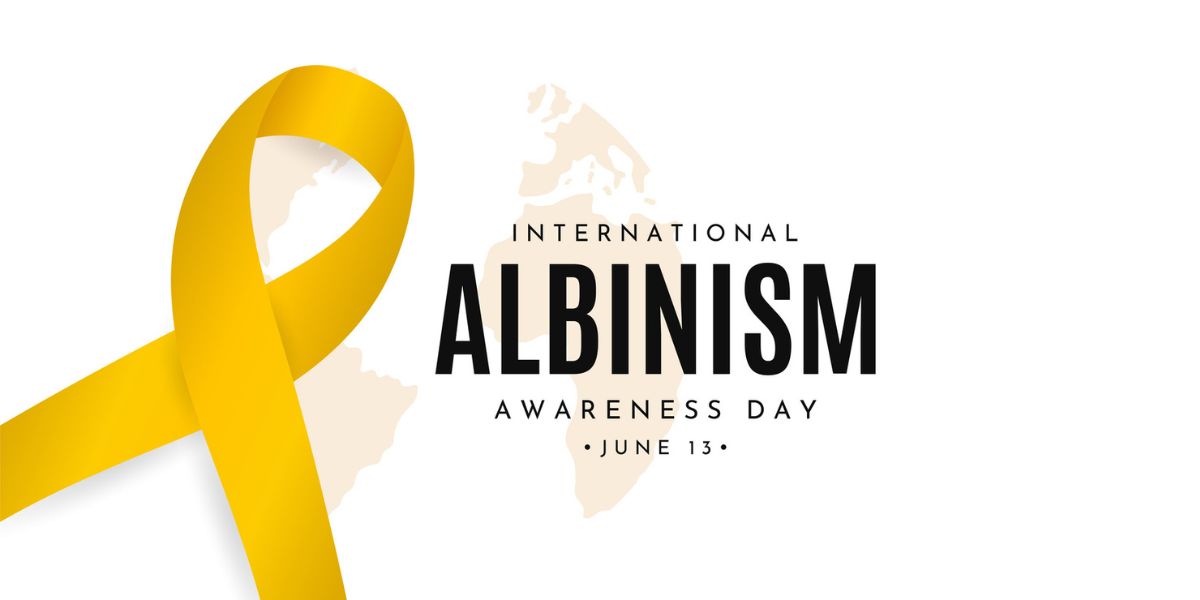Colourism — a casual but pervasive cultural inclination for lighter skin — appears in both clinical and private settings. However, when it comes to those with albinism, people are stigmatised, marginalised, and frequently made invisible.
Published Jun 13, 2025 | 3:04 PM ⚊ Updated Jun 13, 2025 | 3:04 PM

International Albinism Awareness Day.
Synopsis: While colourism exists in India, pale white skin due to a genetic predisposition called albinism is considered a curse. Parents often shoulder the burden of social disapproval of their albino children.
Skin tone is more than just a physical characteristic in India; it is a determinant of acceptance, aspiration, and access. Ironically, while having fair skin is considered a virtue, pale white skin due to a genetic predisposition called albinism is considered a curse!
As a dermatologist, I frequently observe how colourism — a casual but pervasive cultural inclination for lighter skin — appears in both clinical and private settings. However, when it comes to those with albinism, people are stigmatised, marginalised, and frequently made invisible.
Albinism is a rare genetic condition marked by a lack of melanin pigment in the skin, hair, and eyes. Although it is not an illness, it has significant medical, social, and psychological ramifications that need to be addressed.
Extreme sun sensitivity, an increased risk of skin cancer, and dermatological damage from extended ultraviolet (UV) exposure are all medical issues that dermatologists are aware of. Beyond these medical issues, however, is a cultural conundrum: The paradox of being “too fair” for a culture that continues to be biased based on skin tone.
My patients who have albinism, particularly kids and teenagers, tell me stories that transcend their skin tone. They describe being treated unfairly in their villages due to superstition, being called “ghosts” at school, or being gawked at in public.
Parents often shoulder the burden of social disapproval of their albino children.
“People think my child is cursed because she’s white — but they spend money to become fair themselves,” a woman once told me. Our profound paradoxes are summed up in that one sentence.
Colourism is frequently written off as a mere cosmetic issue, but its repercussions are far-reaching for people with albinism. It amplifies emotional trauma and medical vulnerability. Such is the stigma that even medical care is delayed.
Many people with albinism avoid dermatology clinics until sun-induced skin damage — such as skin lesions or sores — progresses to cancerous or severely infected stages. This fear is often driven by shame, misinformation, or fear of judgement.
I’ve witnessed children in rural outreach camps with precancerous patches or blistering scalps, which are completely avoidable with basic knowledge and sun protection — if only their families are not made to feel embarrassed for their albino kids.
In order to provide culturally competent dermatological care, we must expand our scope. Staff at both public and private hospitals need to be trained to identify and combat bias. Curricula for continuing medical education (CME) must include albinism as a lived human experience impacted by stigma and misunderstanding, rather than only as an uncommon hereditary disorder.
Like we do with spectacles or antiretrovirals, the government should also think about providing subsidies for dermatological necessities for people with albinism, such as wide-brimmed hats, UV-protective eyewear, and sunscreens with an SPF of 50+. This has to do with equity, not privilege.
Albinism is rare, but the prejudice it exposes is all too common. On this 13 June, International Albinism Awareness Day, let us use our clinics as places of dignity, along with diagnosis and treatment. Let us keep in mind that empathy is a prerequisite for fairness.
(Views are personal. Edited by Muhammed Fazil.)
